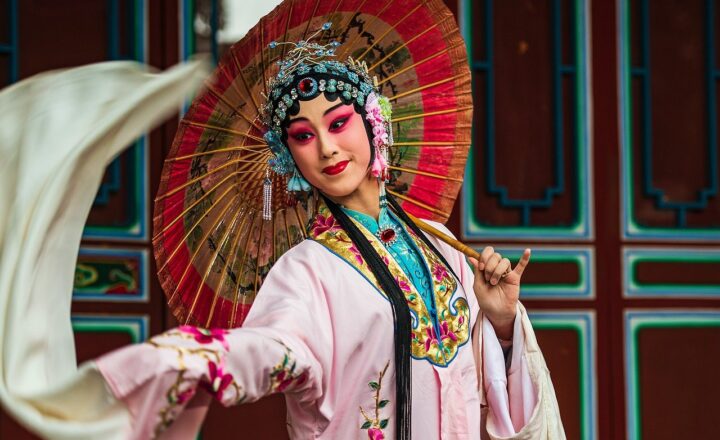The Strangest and Most Unique Ways That People Celebrate New Year’s Across the World
November 17, 2024

New Year’s Eve is a day filled with anticipation and reflection as people around the globe prepare to bid farewell to the year gone by and welcome the new one with open arms. While many celebrate with fireworks, champagne toasts, and countdowns, various cultures have their own unique and sometimes bizarre traditions. In this article, we delve into the strangest and most fascinating ways that people celebrate New Year’s across the world.
1. Spain: Grape Eating Tradition
In Spain, people eat twelve grapes at the stroke of midnight, one for each chime of the clock. This tradition is believed to bring good luck for the upcoming year. The challenge is to eat all twelve grapes within the twelve chimes, which can be quite a feat!
Most people in Spain celebrate this tradition surrounded by friends and family, often at lively street parties in cities like Madrid. It’s a thrilling combination of excitement and a race against time, as participants try not to choke or laugh too much while accomplishing this task!
2. Denmark: Smashing Plates
In Denmark, broken dishes are a sign of good luck, and as such, locals engage in a rather noisy and chaotic tradition where they throw plates at the doors of friends and family. The more broken pottery pieces you find at your doorstep, the more luck you’ll have for the year ahead.
This odd ritual is not only a fun way to celebrate but also helps to foster the sense of community, with people coming together to toss tangible tokens of goodwill and fortuity.
3. Japan: First Temple Visit (Hatsumode)
In Japan, the New Year is a time for reflection and prayer. The custom of Hatsumode involves the first visit to a Shinto shrine or Buddhist temple of the year, during which people pray for health, happiness, and prosperity.
With millions participating, these temple visits turn into festive events, where traditional foods, fortune sticks, and religious ceremonies are commonplace, showcasing Japan’s rich culture and traditions.
4. Greece: Pomegranate Smashing
Greece marks the New Year with the smashing of a pomegranate on the ground. The pomegranate, a symbol of abundance and fertility, is believed to bring good fortune and blessings. The more seeds that scatter, the greater the luck that will come in the new year.
Families gather to share a cake known as Vasilopita, which contains a hidden coin that symbolizes luck. Whoever finds the coin will have an exceptionally fortunate year ahead, making this a delightful and joyous occasion.
5. Latvia: Rolling Boulders
In Latvia, New Year’s Eve celebrations are somewhat unique, involving the rolling of boulders or large stones down a hill. This peculiar activity symbolizes discarding last year’s misfortunes and starting anew, free of previous burdens.
Latvians believe that the shape and size of the stone can represent the challenges they faced in the past year, allowing participants to metaphorically rid themselves of troubles and make way for new opportunities.
6. Italy: Red Underwear
In Italy, wearing red underwear on New Year’s Eve is thought to bring good luck in the upcoming year. This colorful tradition is often accompanied by various festivities, including a large feast and fireworks.
Many Italians believe that toasting the New Year with a glass of spumante while wearing red undies will lead to love and happiness. The practice has become a hallmark of Italian culture, combining humor and superstition in a charming way.
7. South America: Burning Effigies (Año Viejo)
Across several South American countries, including Ecuador and Colombia, it is a tradition to create an effigy (often referred to as Año Viejo) to symbolize the old year’s negative elements. These effigies are filled with items that represent past grievances and are burned at midnight, marking a powerful cleansing ritual for the New Year.
The burning signifies letting go of bad memories and misfortunes while inviting new beginnings. It’s a spectacle filled with fireworks and celebrations, embodying the spirit of renewal.
8. Russia: General Frost and Grandfather Frost
In Russia, New Year’s celebrations feature various folk characters, with General Frost representing winter and Grandfather Frost as the bringer of gifts. Families often gather around a decorated New Year tree, where legends of these characters are shared and embraced.
Additionally, the evening typically includes traditional meals, fireworks, and dancing, creating a festive atmosphere that greatly contrasts the solemnity of the traditional Christmas celebrations that occur earlier in January.
Conclusion
New Year’s Eve celebrations around the world showcase an incredible diversity of cultural practices, each uniquely representing hope, renewal, and community. From eating grapes at midnight in Spain to burning effigies in South America, these traditions remind us of our collective desire for a fresh start.
The way different cultures welcome the New Year speaks volumes about our shared human experience, and the multitude of celebrations only emphasizes how vital community and exploration of traditions remain in our modern world. So, wherever you are this New Year’s Eve, consider embracing the local customs and finding joy in the richness of global diversity.








